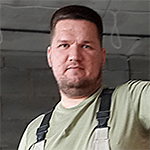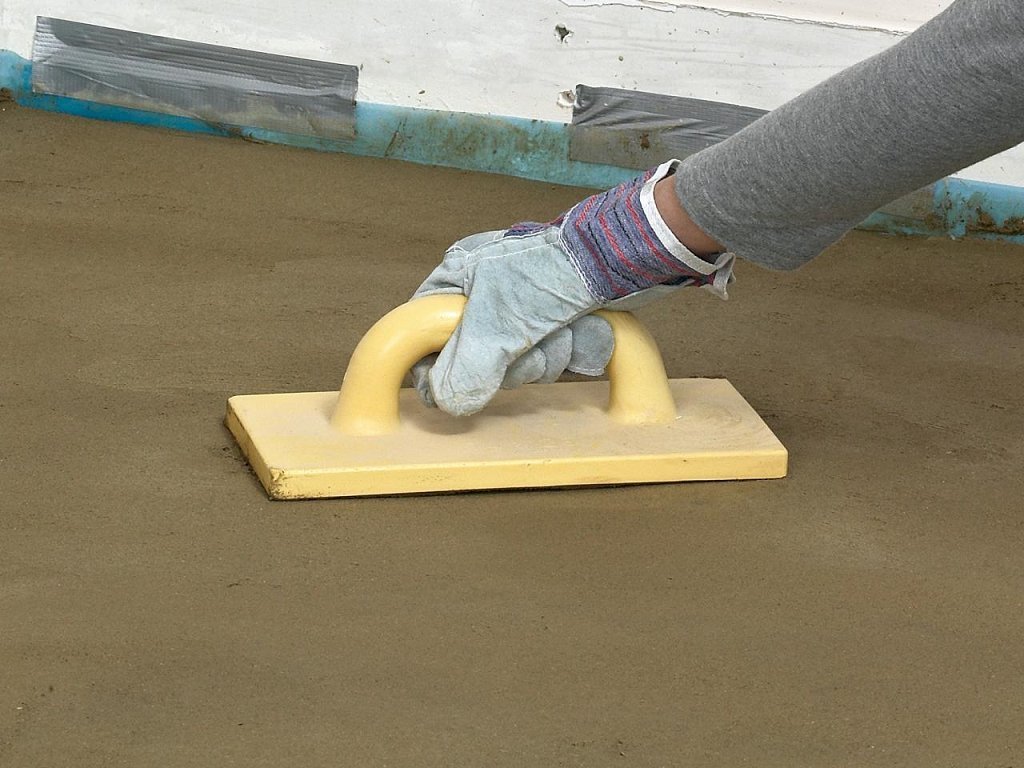Content
- What self-tapping screws are needed for a profile and drywall: all types
- For fastening the profile to the wall, floor, ceiling
- For joining frame parts
- For screwing GCR to the frame
- Fixture for a frame with a cylindrical head ("bugs")
- Self-tapping screws with a washer (for the frame)
- Self-tapping screws for attaching drywall to a metal profile
- Fixture for fixing GKL on a wooden frame
- Pro Tips
- Counting the right amount of hardware
- Drywall calculator for drywall profile
Drywall structures are widespread in the repair and redevelopment of apartments. These are walls, false ceilings, niches and partitions, ducts and decorative fireplaces. High-quality assembly requires reliable fasteners, so it is important to choose the right self-tapping screws to fix the profile for drywall.

What self-tapping screws are needed for a profile and drywall: all types
Fasteners used when working with gypsum plasterboard are divided into 3 groups:
- for fastening the guide profile to the walls, floor and ceiling;
- to connect the elements of the frame;
- for screwing drywall sheets to the profile.
Consider all types in the order of their use.
For fastening the profile to the wall, floor, ceiling
To fix the guide profiles - the basis of the frame for drywall - you can use:
- Dowel nails. Usually fasteners with a diameter of 6 mm and a length of 40 mm are used.

- Self-tapping screws with a press washer (MCP) with dowels selected for them. The length of the self-tapping screw for a brick wall is 41 mm (for concrete, you can take a little shorter), the dowel is 6 × 40 or 6 × 37 mm. It is with such a dowel that a self-tapping screw with a diameter of 4.2 mm will twist tight and hold tight.

- Anchor bolts. They are used in special cases: when attaching a reinforced profile and under increased loads.

- Wood screws. They are used for mounting rails on a wooden wall.

Mr. Build recommends: when choosing between dowel nails and self-tapping screws with a press washer, it is better to prefer the latter. For the first type of fastener, the screw is driven into the dowel, while the screws are screwed in and provide a more reliable, “eternal” fastening.
There is another option for fixing the profile on the walls and ceiling - using a gas mounting gun. It is used to drive dowels into the base and allows you to cope with work easily and quickly. However, the tool itself and components are expensive, so only professionals working with large volumes can afford it.
USEFUL INFORMATION:Making a box of drywall in the toilet: hide the pipes from the eyes

For joining frame parts
Screws of this category are used to connect together elements of a metal frame - racks and rails. There are 2 types of such fasteners:
- With a cylindrical head. Among the masters they are often called bugs, fleas or seeds. Such names are primarily due to the size of the hardware.
- With a press washer. Such screws have a thin, but wide hat, similar to a washer.

- Self-tapping bug

- For profile with press washer
For screwing GCR to the frame
For fastening sheets of drywall to the frame, self-tapping screws with a conical head are used: during installation, they are completely recessed into the interior of the material. This ensures the invisibility of the attachment points after finishing the holes, which means that there are no problems with the fine finish.
Depending on the material of the frame, self-tapping screws are used:
- Fine metal for fastening gypsum board to the profile.
- On wood, if the crate is made of timber.

To choose the right self-tapping screws, consider their types in more detail.
Fixture for a frame with a cylindrical head ("bugs")
The stores offer a wide selection of such products with different characteristics:
- From 9 to 11 mm long. Professionals recommend using shorter ones: there are practically no differences in the quality of fastening, and the savings are not bad.
- Black oxidized and shiny galvanized. Beginners believe that the latter is more durable. In fact, the characteristics of both types are the same, so take those that are available.

- Sharp or with a drill at the end. Masters recommend using sharp ones: they hold better in profile due to a small neat hole. In addition, the price is lower. The advantages of using sharp-tipped screws are visible in the photo.

- With serifs on the back of the hat and without. If possible, it is better to take screws with serifs: they prevent unwinding of the connection during vibrations.
Self-tapping screws with a washer (for the frame)
These elements are also used for fastening the metal profile. They have several significant advantages over the view with a cylindrical head:
- A wide hat provides a more durable grip of the frame elements among themselves.
- They protrude less over the profile plane, which facilitates the subsequent installation of drywall sheets on it.
USEFUL INFORMATION:Knauf Flexible Arch Plasterboard 6 mm Thick

The main drawback is the cost: such hardware will cost more than "bugs".
On sale there are self-tapping screws with a press washer up to 80 mm long, but 13-15 mm are enough to assemble the frame for drywall.
They have a zinc coating, are available with a drill at the end (MTsSP) or sharp (MTsP). Professionals recommend MCP for a regular profile and MCPP for a thick one.

Self-tapping screws for attaching drywall to a metal profile
To learn and pick up such hardware is simple:
- The fine pitch of the thread will ensure a reliable connection with the metal of the frame.
- Length varies from 16 to 152 mm. For high-quality fastening, the length of the self-tapping screw should exceed twice the thickness of the screwed material. Therefore, when installing drywall in one layer, screws 3.5 × 25 mm are used, in two layers - 3.5 × 35 mm.
- The conical hat is recessed into the drywall. It is most convenient to use a screwdriver with special restrictor nozzle: it will not allow to screw the screw too deep and damage the material.

Drywall masters professionally use self-tapping tool. It costs a lot, so buying it to repair one apartment does not make sense.

Fixture for fixing GKL on a wooden frame
When using a battens from beams, they take self-tapping screws on wood having a wider thread. This is the cheapest type of hardware of all listed. For attaching drywall to the bars, the following screws are used:
- 3,5 × 32 - for wall cladding;
- 3.5 × 25 - for ceiling work.

The length of the screw also depends on the parameters of the wood: for loose wood, take longer screws.
Important! For fastening to a metal profile, wood screws will not work. When installing a metal frame, they are used to fasten drywall to wooden blocks, reinforcing areas near the doorway or place for hanging a TV or other equipment.
Pro Tips
We found out that for different stages of work different types of screws are needed. The standard budget fastener kit for the installation of drywall construction will include:
- dowel-nails 6 × 40 mm for mounting guides;
- self-tapping bugs with a sharp end without a drill for a profile;
- self-tapping screws for GKL for metal.
USEFUL INFORMATION:Options for drywall ceilings in the hallway
Mr. Build recommends another set that experienced wizards use. It will cost a little more, but it will make the design more reliable and facilitate the fastening of GKL.
- Self-tapping screws with a press washer (MCP) 41 mm long + dowels 6 × 40 or 6 × 37 mm for guides.
- MCP screws 13–15 mm long for fastening profiles to each other.
- Self-tapping screws for mounting drywall 25 or 35 mm.
Tip: wherever possible, it is better to use profiles for fastening. cutter. Screw the screws only in hard-to-reach places. This method of connection will ensure a tight fit of drywall to the frame (there will be no bulges from the heads of the screws) and with large volumes of work will help to save on fasteners.

Counting the right amount of hardware
There are several ways to calculate the required number of hardware:
- Draw a detailed diagram of the frame, and then count the number of screws for its assembly and for fastening the gypsum plaster.
- Use the tables according to the Knauf technique: they give the consumption of all components per 1 m2 of drywall coating.
- Use an online calculator.
Table of approximate consumption of hardware for wall cladding in one layer:
| Name | Quantity per 1 square. m |
| Dowel nails | 1,6 |
| Self-tapping screws for connecting profiles | 2,7 |
| Self-tapping screws for fastening GKL | 17 |
For partitions with drywall mounting in 1 layer:
| Name | Quantity per 1 square. m |
| Self-tapping screws for GKL | 34 |
| Dowel nails | 1,6 |
For false ceiling:
| Name | Quantity per 1 square. m |
| Screw LN 3.5 x 9 mm | 1,4 |
| Self-tapping screws for GKL | 23 |
| The expansion bolt shield for fastening of the PN 28/27 profiles | 0,7 |
| Anchor dowel | 0,7 |
Drywall calculator for drywall profile
Advice from Mr. Build: purchase hardware with a margin of at least 10%. During installation, the screws can (and will) break and be lost.
When buying, even if the screws are sold in sealed boxes, it is useful to open one of them and check the quality. The thread should be even and the hardware coating should be solid. Often overheated self-tapping screws are found: when screwing with a screwdriver, their hats simply fly off. As a result, the body of the hardware has to be pulled out of the profile or beam using pliers. This is time-consuming, uncomfortable and not always possible. Therefore, it is recommended to purchase screws in reliable and trusted stores. This will save time, money, and nerve cells.

EXPERT SITE
Tsugunov Anton Valerevich
Master Station Wagon
- Since 2003, I have been engaged in the repair and decoration of premises.
- Over 100 completed objects.
- I appreciate the quality, more than the quantity!
Personal page >>>
Friends!
I offer you the service "Friend Builder"
As this site develops, subscribers and visitors are turning to me more and more often asking for help with advice on various issues of repair and decoration.
Questions are sometimes asked very complex and interesting. You can’t write an article for each situation, so I decided to advise you individually.
Thanks to you, friends, a new direction of my favorite work has been born - share your experience and benefit everyone who is undergoing repairs!
Get a one-time consultation from me >>>
Order full apartment repair support >>>


